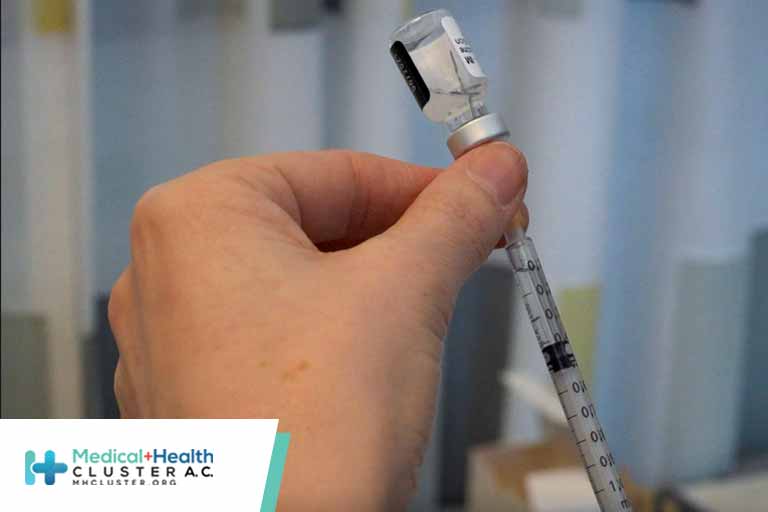7 días en 7 noticias, 1 cifra y 1 frase:...
Leer más
Thrombotic Thrombocytopenia after Ad26.COV2.S Vaccination — Response from the Manufacturer

A case report by Muir et al.1 describes thrombosis, including cerebral venous sinus thrombosis (CVST), associated with severe thrombocytopenia and disseminated intravascular coagulation in a recipient of the Ad26.COV2.S vaccine (Johnson & Johnson/Janssen) against severe acute respiratory syndrome coronavirus 2 (SARS-CoV-2). Among the more than 75,000 participants in the clinical trial program for our Janssen Ad26.COV2.S vaccine (of which approximately 50,000 received active vaccine), a single case of CVST with thrombocytopenia occurred in a vaccine recipient. We paused our program to review this case from our first phase 3 study; after consultation with external clinical experts, no clear causality was established, and the data and safety monitoring board agreed that we could restart the study. The vaccine recipient was subsequently found to have had antibodies against platelet factor 4 (PF4) at the time of the event, a finding similar to that in the case described by Muir and colleagues. As part of our postauthorization pharmacovigilance program, Janssen ongoing safety surveillance received reports of six cases of CVST with thrombocytopenia occurring 7 to 14 days after vaccination, including the case described by Muir et al. On April 13, 2021, in an abundance of caution, the Food and Drug Administration (FDA) and the Centers for Disease Control and Prevention (CDC) recommended a pause in vaccination with Ad26.COV2.S in the United States to allow further study of the situation and to provide physicians guidance on the diagnosis, treatment, and reporting of CVST in combination with low platelets.2 These cases were reported among more than 7.2 million persons who had been vaccinated with Ad26.COV2.S globally as of April 14, 2021.3 Thus, the reporting rate is less than 1 in 1,000,000 vaccinations, though it is possible that the cases are underreported.
At this time, evidence is insufficient to establish a causal relationship between these events and the Ad26.COV2.S vaccine. CVST is a very rare health condition,4 and thus far, events reported in recipients of the Ad26.COV2.S vaccine are occurring within the range of published background incidence (0.2 to 1.57 per 100,000 person-years).4,5 It is important to note that the incidence of CVST associated with low platelets is unknown and is considered by the FDA and the CDC to be extremely low.2
Muir et al. suggested that coronavirus 2019 (Covid-19) vaccines using an adenoviral (Ad) vector platform may be related to the occurrence of thrombotic thrombocytopenia. Recent reports by Greinacher et al. and Schultz et al. (both published on April 9, 2021, at NEJM.org) concluded that vaccination with the ChAdOx1 nCoV-19 vaccine (Oxford–AstraZeneca) may lead to rare thrombotic thrombocytopenia (see references S1 and S2 in the Supplementary Appendix, available with the full text of this letter at NEJM.org). The vectors and spike (S) protein inserts used in the ChAdOx1 nCoV-19 vaccine and the Ad26.COV2.S vaccine are substantially different. The Ad26.COV2.S vaccine uses a human Ad26–based vector, whereas the ChAdOx1 nCoV-19 vaccine uses a chimpanzee adenovirus–based vector (references S3 and S4). Ad26 is from Ad species D and can engage CD46 as its cellular receptor, whereas ChAdOx1 nCoV-19 is from Ad species E and uses the Coxsackie and adenovirus receptor (CAR) and possibly other molecules as its cellular receptors; these two vectors thus use different host cell receptors and are likely to have different phylogenetic and biologic characteristics. In addition, the Ad26.COV2.S vaccine transgene codes for a membrane-bound SARS-CoV-2 S protein (prefusion conformation–stabilized by two proline substitutions) that does not shed S1, most likely as a consequence of knocking out the furin cleavage site (reference S5), which is different from the unmodified S protein encoded by the ChAdOx1 nCoV-19 vaccine. Therefore, these two adenoviral vector Covid-19 vaccines may have quite different biologic effects. More evidence is needed to clarify the observation of thrombotic thrombocytopenia in persons receiving a vaccine against Covid-19.
We continue to work closely with experts and regulators to assess the data, and we support the open communication of this information to health care professionals and the public.
Jerald Sadoff, M.D.
Kourtney Davis, Ph.D.
Macaya Douoguih, M.D.
Janssen Vaccines and Prevention, Leiden, the Netherlands
mdouogui@its.jnj.com
Créditos: Comité científico Covid




